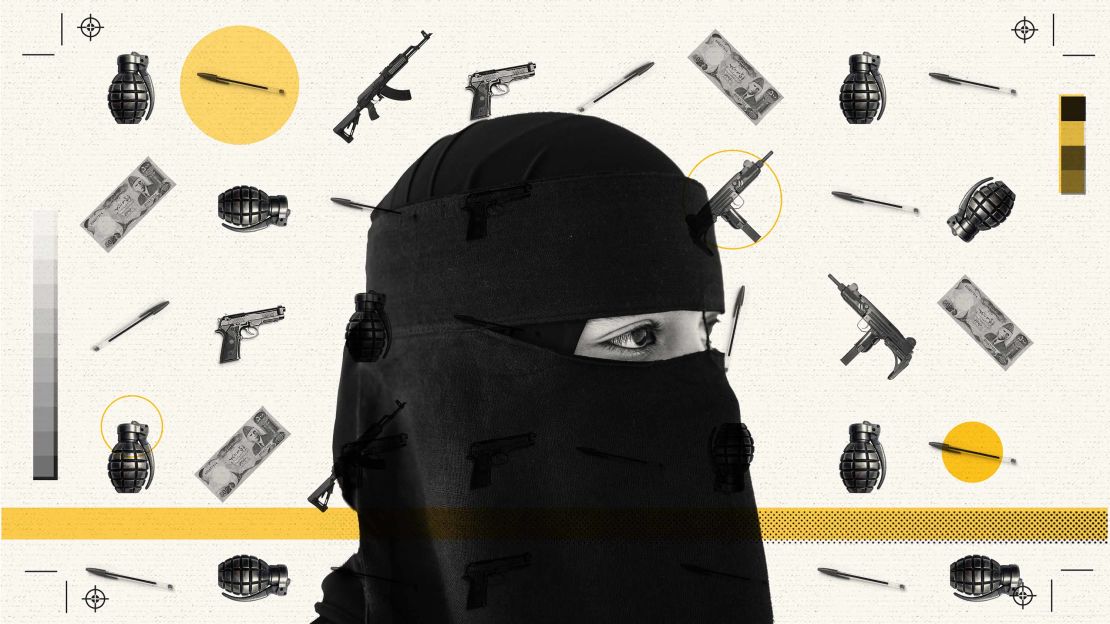A glossy women’s magazine has hit virtual newsstands, its front cover splashed with the image of a woman, veiled from head to toe, walking off into a yellow-hued desert.
But, unlike other fashion or beauty publications, this one has a niche audience in mind: would-be female jihadists.
The English-language magazine – which debuted online but in a print-style format – was published by the Pakistani Taliban, Tehreek-e-Taliban (TTP), earlier this month without much fanfare.
The first edition of Sunnat E Khaula, which harks back to a seventh-century female Muslim warrior named Khaula, calls on “like-minded jihadi sisters” to organize “secret gatherings at home,” arrange “physical training classes” and “prepare for martyrdom operations.”
“We want to provoke women of Islam to come forward and join the ranks of mujahideen [holy warriors] of Islam,” an opening editorial reads.
The TTP’s women’s magazine – the first of its kind – takes a page out of the ISIS propaganda playbook to target women. And the timing of its release isn’t accidental. As ISIS’ self-proclaimed caliphate crumbles in Syria and Iraq, the Taliban has seized on an opportunity – offering an alternative for radicalized women willing to shift their loyalties.
“The first thing I would think of with a piece of propaganda like this coming out is that they [the TTP] are trying to replicate efforts by Islamic State, particularly now that the caliphate is in decline,” Nikita Malik, a senior research fellow at the Henry Jackson Society, told CNN.
Malik, who has studied women and radicalization extensively, says that while the Taliban has used women before, the magazine signals a change in strategy. Despite the group’s historically violent subjugation of women – whom they have killed, barred from attending schools and forced into marriages – it seems they’re trying to attract a new audience.
“It is definitely an attempt, especially as it’s the first one, to reach out to a different audience, to reach out to different recruits,” Malik said, adding that it’s unusual for the TTP to actively seek out women to take up arms.
The 45-page magazine features a lengthy article, entitled “Time of martyrdom has come,” that looks at ways women can assist the TTP in waging jihad. Among various action points outlined, the piece calls on women to “train yourself in weapon handling, self-defense.” The text is overlaid on photos of women dressed in niqabs, carrying assault rifles.

“I ask you sisters to prepare yourself for martyrdom operations. There are lots of mujahideen working in Pakistan, please help them in achieving their aim,” the article reads.
Last week, in a speech announcing plans to expand US military intervention in Afghanistan, President Donald Trump blasted Pakistan for being a terrorist hotbed.
Georgia State professor Mia Bloom, whose 2011 study, Bombshell: Women and Terrorism, explores women’s roles in terrorist movements, said she’s seen a progression over time in how groups like the TTP reach out to women – whether it’s with al Qaeda’s Al-Shamikha magazine (dubbed ‘Jihad Cosmo’) or its Al-Khansaa women’s webzine.
“It’s really a strategic logic that these terrorists are using,” Bloom told CNN. “For them, women are a tool or an instrument, to be exploited for whatever purposes necessary, and their objectives are ultimately longevity, survival and to flourish.”
Bloom explained that both the Taliban and ISIS have increasingly used women as a tool to recruit other women, reward militants, retain their base and produce the next generation of fighters.
“When you start to look at the progression over time, all of these publications attracting women are trying to cast a wide net and create the broadest possible appeal,” Bloom said.
ISIS has been particularly adept at attracting women to suit these needs, according to Bloom, who tracks the group’s propaganda output.
As women begin to flee what ISIS claims as the caliphate, Bloom said she sees small signs that the militant group’s message to female recruits is changing. A video released by ISIS earlier this month showed young girls for the first time, reciting passages from the Quran in a classroom.
“Here you have ISIS saying, ‘We’re educating our girls; we’re not like Boko Haram; we’re not like the Taliban.’”
The Taliban banned girls from schools in Pakistan’s Swat Valley in 2009. Three years later, militants shot Malala Yousafzai, the schoolgirl turned women’s rights advocate, for defying them. But with its new publication, the group appears to be specifically targeting educated, upper-middle class, English-speaking women.
In an article titled, “My journey from ignorance to guidance,” a Pakistani woman, who the magazine says studied overseas and received her PhD, tells how she contemplated traveling to Saudi Arabia and Syria before joining the TTP.
Louisa Tarras-Wahlberg, who has researched ISIS’ propaganda targeting women, explained that this personal story – among others in the magazine – is aimed at engaging women who are already actively seeking to “wage jihad.”
“They’re treating this as a window of opportunity. They’re seeing that ISIS is struggling and people are fleeing from Syria and Iraq,” Tarras-Wahlberg told CNN. “This is the perfect moment for another organization to enter the playing field and try to attract that group of women … women who are already highly engaged.”
